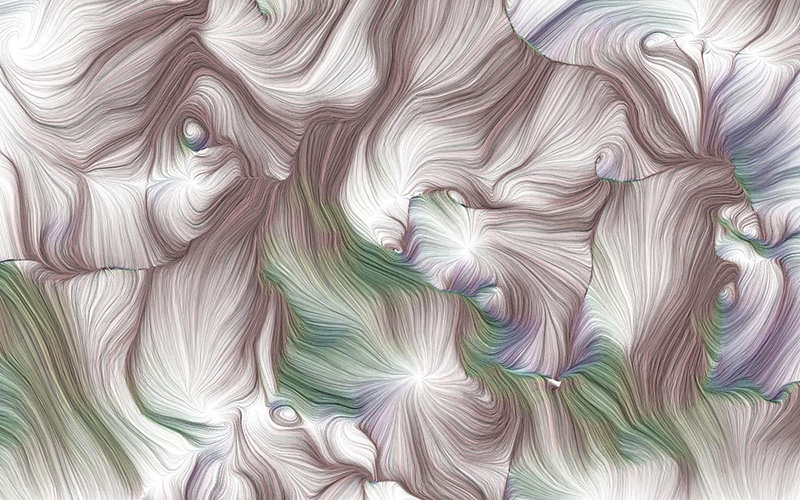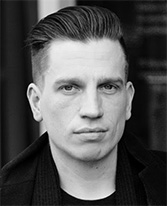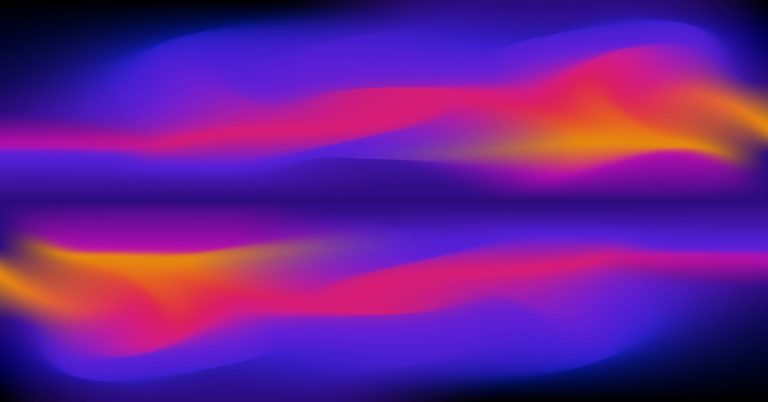
Every major philosopher refines and revises their initial theories in their later works. After all, philosophies do not simply spring forth from the mind in their final form. Yet it is far less common to see a philosopher break from their initial position and create a second and truly distinct body of work. Famous examples of such intellectual conversions include Martin Heidegger making his Kehre and Ludwig Wittgenstein dethroning his own Tractatus Logico-Philosophicus. In Against Continuity, I argue that Gilles Deleuze is another such philosopher.
This is far from an orthodox position. Decades of Deleuze scholarship have mostly assumed that a single metaphysics underlies his impressive array of studies, theories and concepts. (A minority of scholars holds that Deleuze does not have a metaphysics at all, but that is a story for another time).
Difference and Repetition is often seen as Deleuze’s masterpiece. This has caused many to read his later works as if they keep building on its metaphysics, refining it with new intricacies and making it the background theory to more politicised writings. In it, Deleuze argues that our everyday experience of entities as being self-identical and discontinuous is illusory. Your bike, house, body, cat and favourite book may strike you as distinct and separate individuals. But such individuals are not what really exists.
According to ‘young’ Deleuze (who was 43 years old when Difference and Repetition was published in 1968), what truly exists are not discrete things but dynamic processes. Deleuze does not locate these processes at a ‘micro’ level of reality, for example among subatomic particles or genes. He locates these processes in a ‘virtual realm’ that is different in kind from everything in space and time – particles and genes included. Reality ultimately is this virtual realm; a roiling ocean of pure processes that constantly mingle and clash. Our experiences of discrete things in space and time are nothing but distorted and inefficacious expressions of that virtual dimension.

But it turns out the metaphysics of Difference and Repetition only applies to Difference and Repetition. In a preface to The Logic of Sense as well as elsewhere, Deleuze explicitly states that he abandoned his virtual realm theory, noting that he came to see it as an ‘archaic’ philosophy. Believe me when I say that Deleuze does not mean that word as a compliment to himself. Starting from The Logic of Sense, all subsequent works are rooted in a second – and hitherto overlooked – ontology that is incommensurable with Deleuze’s initial position.
In other words: one of the most important continental philosophies is actually two philosophies.
So, what happened? To put it briefly, any philosophy that tries to explain the vast diversity of reality from a single privileged dimension sooner or later turns out to be inconsistent. This is as true for pre-Socratic reductions of reality to primordial elements as it is for contemporary reductions of reality to subatomic fields. The classic problems remain. Why would a primordial layer of reality ever start generating derivative or illusory versions of itself? And how could such new productions ever manifest properties that their parent entities seem to lack?
Deleuze initially thought that he had solved such problems by showing that the processes populating his virtual realm could be self-differentiating: their very being would be to become what they were originally not. Unfortunately, the notion of a realm full of a self-differentiating processes did not stand up to scrutiny. It turned out that you cannot overcome the age-old problems of good old static monism by turning it into a hyper-agitated monism.
In The Logic of Sense and later works, Deleuze introduces and subsequently refines a second philosophy that no longer explains reality in terms of a virtual realm. Instead, its key tenet is that entities as such – from atoms to cars, festivals to thoughts, and planets to microbes – are all there is to reality. Deleuze varyingly refers to entities as ‘machines’, ‘multiplicities’ or ‘assemblages’. He now insists that these are the ‘minimum real unit’ of reality, as he puts it in Dialogues.

This is quite a dramatic change! All of a sudden, there is no longer some ‘more real’ dimension hiding behind the curtain of ordinary reality. Instead, all possible entities at all possible scales are endowed with full being. It is now entities among themselves who are the true movers and shakers of reality. They are no longer dissolved into amorphous processes but instead take full responsibility for everything that transpires.
It is in this second phase of his thought that we must locate Deleuze’s real philosophical genius. His ‘machine philosophy’ demonstrates that any entity whatsoever has an intricate ontological structure that makes every form of reduction superfluous. This makes Deleuze’s mature philosophy one of the strongest bulwarks against those who reduce planets to particles and humans to genes – but also against his earlier theory that reduced everything to the turbulence of anonymous processes.

Arjen Kleinherenbrink is Assistant Professor in metaphysics and philosophical anthropology at the Center for Contemporary European Philosophy of the Radboud University in Nijmegen, the Netherlands.

Against Continuity: Gilles Deleuze’s Speculative Realism is the first book to demonstrate that the beating heart of Gilles Deleuze’s philosophy is a systematic ontology of irreducible, singular entities. This requires a radical break with decades of Deleuzian orthodoxy, according to which Deleuze’s metaphysics revolves around the dissolution of discrete entities into a continuous world of flows and events.
- Visit the webpage for Against Continuity: Gilles Deleuze’s Speculative Realism by Arjen Kleinherenbrink – out now from Edinburgh University Press
Image Credits
‘2013_2_9_23_14_66519’ by Justin Lincoln, via Flickr (CC BY-SA 2.0)
‘Black Country Living Museum – Lench’s Oliver Shop – objects and items – cogs and gears’ by Elliott Brown, via Flickr (CC BY-SA 2.0)





Given that I am responding to a scholar who has done work in this line of interpretation and written a whole book on it, I find it presumptuous of me to say this as bluntly, but well, I simply disagree & I guess would align myself with “Deleuzeian orthodoxy” on this count. It seems to me that in modulated forms the basic opposition of actual-virtual re-appears in all of his works, even as it undergoes change in terminology and concepts as was Deleuze’s practice.
In LoS for instance Chronos (time of the “pure present” of bodies and their mixtures) is contrasted with Aion (the time of infinitesimals, events, singularities and the ever eluding present). In AO and ATP we have the body without organs, abstract machine, diagram, molar and molecular, territorialization and de-territorialization, etc. Most importantly in WIP we have the plane of immanence.
In all cases we have in the second relata a concept which attempts to give a “foundation” which is really a sans-fond to existent actual phenomena. So really, I see a radical continuity underneath conceptual renovation in his work. Deleuze himself comments that everything he has done later (including with Guattari) is connected with D&R (see the later preface).
The NEED for such conceptual renewal might stem from the problem Kleinherenbrink points out astutely. Namely to avoid thinking in terms of distinct “realms”. A close and careful reading of D&R, I think, reveals attempts to see virtual and actual as immanent aspects of the same reality. There is only one being, after all. But this being is not the Being of (particular) beings.
Really its the same problem Nāgārjuna faces in the doctrine of emptiness. There is the conventional world and the Ultimate Truth, sunyata, emptiness, nirvana. As much as these need to be distinguished to dispel illusions of essentialism, they need to be affirmed as immanent at the same breath to avoid a NEW hierarchy, dualism and essentialism driven by this same distinction.
The key issue is not whether Deleuze “broke” with his earlier metaphysics but how he transformed his way of thinking about difference and immanence. Kleinherenbrink attempts to frame Deleuze’s later works as a **shift toward a philosophy of discrete units**, rather than a continuation of process-oriented thought.
However, this is a **false dichotomy**. **Deleuze never abandoned difference as the fundamental principle of reality.**
• In *Difference and Repetition*, the virtual is not a “more real” dimension but a **gradient of accessibility**, which structures perception and events.
• In *The Logic of Sense*, this same logic appears in the distinction between **Chronos and Aion**—not as two separate realms, but as **a topology of intensity**, shaping trajectories of becoming.
• Each event is **not a static copy** but **a unique condensation of intensity**, which does not replicate previous states but generates authentic novelty, emerging with its own temporality, spatiality, and consistency.
Kleinherenbrink **misinterprets the nature of abstract machines and the body without organs**, treating them as **discrete entities**, which constitutes a fundamental error.
• **The body without organs is not a substance but a diagram of disorganization.**
• **The abstract machine is not an entity but an operational structure that filters intensities.**
• **Deterritorialization and processuality were never abandoned; rather, they were reformulated into more operative and precise models.**
Thus, Deleuze does not **reduce virtuality to substance**—his thought remains **processual, filtrational, and dynamic rather than substantial.**
Kleinherenbrink attempts to align Deleuze with **speculative realism**, but this is a fundamental misreading.
• Object-Oriented Ontology (OOO) assumes that entities exist independently of their relations.
• **Deleuze, however, always thought relationally: through intensities, differences, trajectories, and the filtering of events.**
• There is no room in his philosophy for “individual units” as **ontologically closed substances.**
If we are to locate a real shift in Deleuze’s philosophy, we will not find it in an **abandonment of continuity in favor of discrete objects**, but rather in a **deepening of difference as an operative filtration of intensity.** There are no substantial objects—only **variable processes of differentiation.**
In this sense, **there are not “two Deleuzes”**—there is only one, who **consistently develops his thought beyond the constraints of static ontological divisions.**